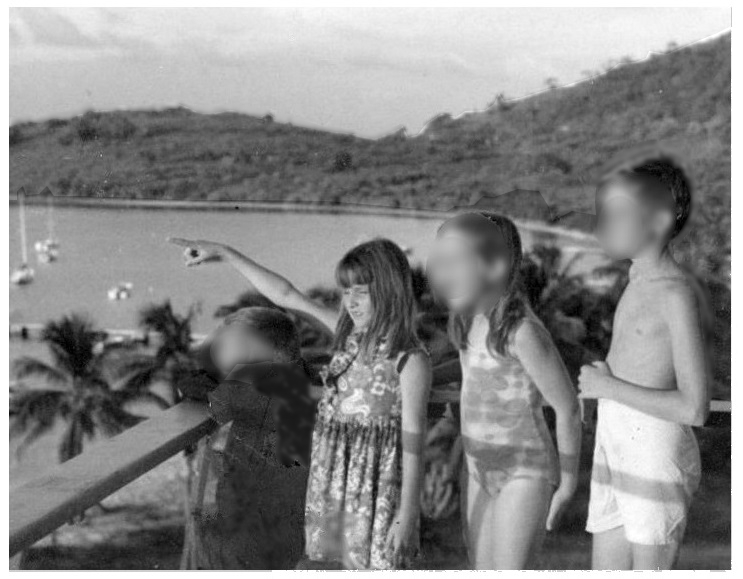New Book on Child (and Adult) Eyewitnesses of Living Pterosaurs
I quote from this nonfiction book, although this is a preliminary form of these sentences in this book, The Girl who saw a Flying Dinosaur:
Chapter 1: Patty Carson in Cuba (Guantanamo Bay)
Scientists use the word ‘pterosaur’ for a group of flying creatures that they know about because of fossils. Most people . . . use another word: ‘pterodactyl.’ That is not scientific, but most people are not scientists. That is why Patty used the word ‘pterodactyl.’
Her father did not believe her at first, but later may have been unsure. Patty’s older brother and sister later saw what may have been the same thing, but they did not see so clearly. . . .
Patty’s older brother, Tom, saw something like it about one year after her sighting, but he did not get such a good look. He saw it for only about three seconds. I talked with him by phone in 2011, and he answered my questions.
Tom was ten years old and was with two other boys. He saw the thing flying about 100 feet over their heads. It looked like it had no feathers, but Tom is not sure about that. It looked larger than a pelican.
Support From Eyewitness Eskin Kuhn
An extremely important point about the sightings those children had at Guantanamo Bay is this: A few years later, the U.S. Marine Eskin C. Kuhn had a sighting of two “pterodactyls,” also at Gitmo, and within minutes of his view of them he sketched what he had seen.
Sketches by Eskin Kuhn (left) and Patty Carson* (right; *reversed horizontally) – Notice similarities in the head crest and in the beak.
.
Real Eyewitnesses, Child and Adult
These two persons have given their real names to the world, so we’re not dealing with anonymous third-hand accounts. I, Jonathan Whitcomb, have questioned them many times, over a period of years, and I submit that they are both credible eyewitnesses of this kind of flying creature.
- Patty Carson (her sighting was in 1965)
- Eskin Kuhn (his sighting was in 1971)
This long-tailed featherless animal is now called ‘ropen.’ That name comes from the Kovai language of Umboi Island, Papua New Guinea, where American explorers first searched, repeatedly, for a modern living pterosaur. I do not declare that the species of nocturnal flying creature on Umboi Island is the same species seen in Cuba in the mid-twentieth century, but I do suggest a close relationship may exist between them and that they are living pterosaurs.
Patty Carson points toward a popular island tourist attraction
###
.
Books about the ropen, or “flying dinosaurs”
I’m presently writing a nonfiction book for children 8-12 years old. It should be published and in print sometime in November (2018): The Girl who saw a Flying Dinosaur.
.
Three nonfiction paperback books on these wonderful flying creatures, what some people call “pterodactyls” or “dinosaur birds,” and another book in digital format: Live Pterosaurs in Australia and in Papua New Guinea
.
Patty Carson was only a small child, when she and her brother saw a Rhamphorhynchoid pterosaur in clear daylight, at the Guantanamo Bay military station in eastern Cuba, around 1965.
.
Child and his mother saw a dinosaur bird
After a hot afternoon in the Salt Lake Valley, on the first day of summer, a lady and her 12-year-old son decided to sleep in their backyard in western Draper and look at the stars, at least for the first part of the night. They had no idea that anyone had seen a huge dragon-like creature fly over the neighborhood earlier in the year.
.
Little girl saw a flying dinosaur
This eyewitness is Patty Carson, who saw one of the flying creatures at Guantanamo Bay, Cuba, around 1965, when she was a child.
.
Sightings of modern pterosaurs in recent history:
- California (three)
- Louisiana
- Cuba
.
These nonfiction books are divided into three types:
- Worldwide sightings in general
- Pterosaur encounters in North America
- Sightings in the Southwest Pacific


